Table of content
Pig’s large intestine braised with tofu, known as Dachang Shao Doufu in Chinese cuisine, is a hearty, flavorful dish that combines the chewy texture of thoroughly cleaned pig intestines with the soft, absorbent nature of tofu. This dish, rooted in traditional Chinese cooking techniques, is beloved for its rich umami flavors and the contrasting textures of its ingredients. While it may sound intimidating to those unfamiliar with offal-based dishes, this recipe breaks down the process into manageable steps, ensuring even novice cooks can achieve restaurant-quality results. This article will guide you through selecting ingredients, preparing the intestines, and executing the braising process to perfection.
Understanding the Dish
Dachang Shao Doufu originated in China’s home-style cooking traditions, where thrifty cooks sought to transform less conventional cuts of meat into delicious meals. Pig intestines, once meticulously cleaned, develop a satisfying chewiness when cooked properly, making them a perfect pairing for silken tofu, which absorbs the dish’s savory braising liquid. The result is a harmonious blend of textures and flavors—tender, melt-in-the-mouth tofu complemented by the resilient bite of the intestines, all bathed in a fragrant, slightly spicy sauce.
Ingredients
To recreate this dish authentically, gather the following ingredients:
For the Pig Intestines
- 500 grams fresh pig large intestine (choose a reputable butcher to ensure quality)
- 2 tablespoons coarse salt (for scrubbing)
- 3 tablespoons white vinegar (to neutralize odors)
- 2 tablespoons all-purpose flour (to aid in cleaning)
For the Braising Liquid
- 4 cups water (or unsalted chicken stock for deeper flavor)
- 3 tablespoons soy sauce (preferably dark soy sauce for color)
- 2 tablespoons oyster sauce
- 1 tablespoon Shaoxing wine (or dry sherry as a substitute)
- 1 teaspoon sugar (to balance saltiness)
- 1-inch piece fresh ginger (thinly sliced)
- 4 garlic cloves (smashed)
- 2 star anise pods
- 1 cinnamon stick (3 inches long)
- 1 dried red chili (optional, for mild heat)
For the Tofu and Aromatics
- 400 grams soft tofu (silken tofu works best; avoid firm varieties)
- 1 medium onion (diced)
- 1 red bell pepper (julienned, for color and sweetness)
- 3 scallions (white and green parts separated, sliced diagonally)
- 2 tablespoons vegetable oil (peanut or canola oil preferred)
For Thickening and Garnish
- 1 tablespoon cornstarch (mixed with 2 tablespoons water)
- 1 teaspoon sesame oil (for finishing)
- Fresh cilantro leaves (optional, for garnish)
Step-by-Step Preparation
Cleaning the Pig Intestines
Cleaning pig intestines is the most critical step in this recipe. Improper cleaning can result in lingering odors or a gritty texture. Follow these steps meticulously:
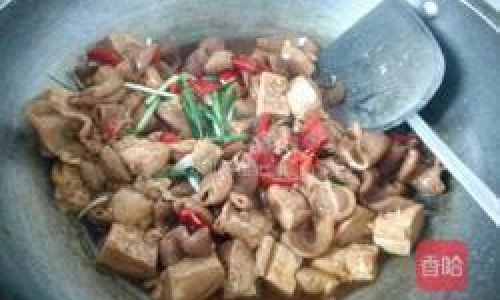
- Rinse the Intestines: Place the intestines under cold running water and gently massage the exterior to remove any visible debris.
- Turn Inside Out: Use a chopstick or your fingers to carefully turn the intestines inside out. This exposes the inner lining, which requires thorough scrubbing.
- Scrub with Salt and Vinegar: Sprinkle coarse salt and white vinegar over the inner lining. Scrub vigorously for 5–7 minutes to dislodge fat and impurities. The salt acts as an abrasive, while the vinegar neutralizes odors.
- Rinse Again: Rinse the intestines under cold water until the water runs clear.
- Flour Treatment: Dust the intestines with all-purpose flour and knead them gently for 3–4 minutes. The flour absorbs residual moisture and odors. Rinse once more.
- Blanch: Bring a pot of water to a boil and submerge the intestines for 2 minutes. This step firms the tissue and kills bacteria. Drain and pat dry.
Cutting the Ingredients
- Intestines: Slice the cleaned intestines into 2-inch segments. Ensure uniformity for even cooking.
- Tofu: Drain the tofu and cut it into 1-inch cubes. Gently pat dry with paper towels to prevent breaking during cooking.
- Aromatics: Dice the onion, julienne the red bell pepper, and separate the scallion whites (for sautéing) and greens (for garnish).
Sautéing the Aromatics
Heat 2 tablespoons of vegetable oil in a wok or deep skillet over medium heat. Add the sliced ginger, smashed garlic, scallion whites, and star anise. Sauté for 2–3 minutes until fragrant. Avoid browning the garlic, as it can turn bitter.
Braising the Intestines
- Add the sliced intestines to the wok and stir-fry for 4–5 minutes until they begin to sizzle and release their fat.
- Pour in the Shaoxing wine to deglaze the pan, scraping up any browned bits.
- Stir in the soy sauce, oyster sauce, sugar, and cinnamon stick. Add the water (or stock) and bring to a simmer.
- Cover the wok and reduce the heat to low. Braise for 45–60 minutes, stirring occasionally, until the intestines are tender but not mushy.
Adding the Tofu and Vegetables
- Gently place the tofu cubes into the braising liquid, submerging them with a spoon. Avoid stirring vigorously to prevent breaking the tofu.
- Add the red bell pepper and onion. Simmer uncovered for 10–12 minutes, allowing the tofu to absorb the flavors.
Thickening the Sauce
- Stir the cornstarch slurry and slowly pour it into the wok while gently stirring. The sauce will thicken within 1–2 minutes.
- Adjust seasoning with salt if needed.
Finishing Touches
- Drizzle with sesame oil and sprinkle the scallion greens and cilantro (if using) over the dish.
- Serve immediately with steamed rice or noodles.
Tips for Success
- Patience in Cleaning: Rushing the cleaning process will compromise the dish’s flavor. Invest 30–40 minutes in thorough scrubbing.
- Tenderizing the Intestines: Overcooking makes the intestines mushy, while undercooking leaves them chewy. Test for tenderness by piercing a piece with a fork—it should yield with slight resistance.
- Tofu Selection: Silken tofu is delicate but absorbs flavors beautifully. For a sturdier texture, use medium-firm tofu, but reduce stirring to avoid crumbling.
- Spice Adjustments: Customize heat levels by adding more dried chilies or a dash of chili oil.
- Storage: Leftovers can be refrigerated for up to 3 days. Reheat gently to avoid breaking the tofu.
Cultural Context and Variations
In Chinese households, Dachang Shao Doufu is often served during family gatherings or as a comforting weeknight meal. Regional variations exist: in Sichuan cuisine, doubanjiang (fermented broad bean paste) is added for a spicy kick, while Cantonese versions might include black mushrooms or bamboo shoots for extra depth.

For a vegetarian adaptation, substitute the intestines with textured vegetable protein (TVP) or king oyster mushroom stems, which mimic the dish’s meaty texture.
Conclusion
Mastering Dachang Shao Doufu requires attention to detail and respect for traditional techniques, but the results are deeply rewarding. This dish exemplifies the Chinese culinary philosophy of transforming humble ingredients into extraordinary meals. Whether you’re an offal enthusiast or a curious home cook, this recipe invites you to explore the rich tapestry of flavors that make Chinese cuisine so enduringly beloved. With practice, you’ll find that the interplay of textures—the give of the intestines, the softness of the tofu, and the crunch of vegetables—creates a symphony on the palate that lingers long after the last bite.
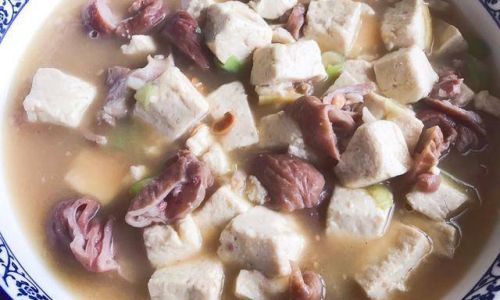
By following this guide, you’ll not only recreate a classic dish but also gain insight into the art of balancing flavors and textures—a hallmark of great cooking. Bon appétit!
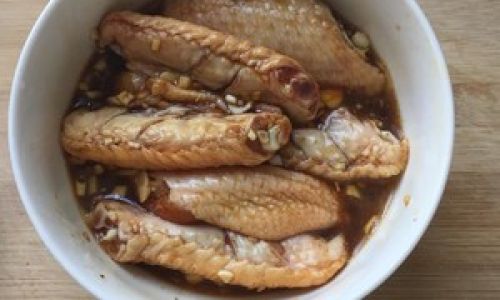

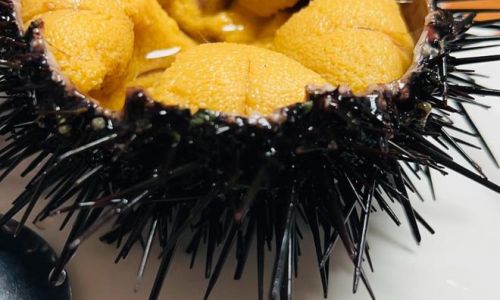

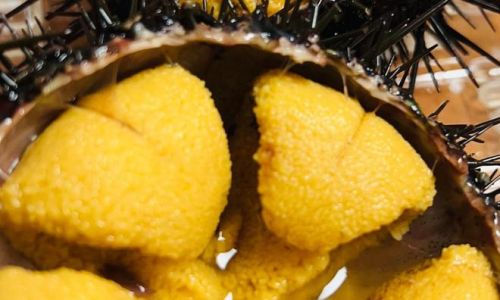
0 comments